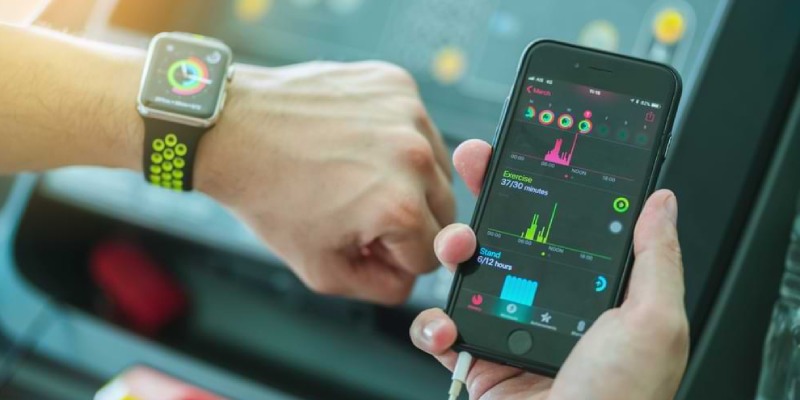JAKARTA, cssmayo.com – In recent years, wearable fitness technology has revolutionized the way individuals monitor their health and fitness. From smartwatches to fitness trackers, these devices provide real-time data and insights, empowering users to take control of their wellness journey. This article explores the benefits of wearable fitness technology, the latest trends in devices, and practical tips for maximizing their effectiveness.
Understanding Wearable Fitness Technology

What is Wearable Fitness Technology?
Wearable fitness technology refers to electronic devices worn on the body that track various health and fitness metrics. These devices can monitor physical activity, heart rate, sleep patterns, and more, providing users with valuable insights into their overall health.
The Importance of Wearable Fitness Technology
- Real-Time Monitoring: Wearable devices provide real-time data, allowing users to track their progress and make informed decisions about their health and fitness goals.
- Goal Setting and Motivation: Many wearable fitness devices come with features that allow users to set specific goals and receive reminders or notifications, helping to keep motivation levels high.
- Health Insights: By collecting and analyzing data over time, wearable technology can provide insights into trends in health metrics, enabling users to make proactive changes to their lifestyle.
- Community Engagement: Many devices offer social features that allow users to connect with friends and family, fostering a sense of community and accountability.
Key Features of Wearable Fitness Technology
1. Activity Tracking
Most wearable fitness devices monitor daily activities, such as the number of steps taken, distance covered, and calories expended. This feature encourages users to stay active and can help them meet their fitness goals.
2. Heart Rate Monitoring
Many wearables include heart rate monitors that provide real-time data on heart rate during workouts and throughout the day. This information can help users optimize their training and monitor their cardiovascular health.
3. Sleep Tracking
Sleep is a crucial component of overall health. Wearable fitness technology often includes sleep tracking features that analyze sleep patterns, duration, and quality, helping users identify areas for improvement.
4. GPS and Navigation
For outdoor enthusiasts, GPS functionality allows users to track their routes, distance, and pace during activities like running, cycling, or hiking. This feature enhances the overall experience by providing accurate data on performance.
5. Health Monitoring
Some advanced wearables offer additional health monitoring features, such as blood oxygen level tracking, stress management tools, and menstrual health tracking, providing a comprehensive view of an individual’s wellness.
Popular Wearable Fitness Devices
1. Smartwatches
Smartwatches, like Apple Watch and Samsung Galaxy Watch, combine fitness tracking with smartphone capabilities. They offer a wide range of features, including notifications, music control, and customizable watch faces, in addition to fitness metrics.
2. Fitness Trackers
Devices like Fitbit and Garmin fitness trackers focus primarily on tracking physical activity and health metrics. They are typically lighter and more affordable than smartwatches, making them a popular choice for fitness enthusiasts.
3. Smart Clothing
Innovations in wearable technology have led to the development of smart clothing, such as shirts and leggings that monitor metrics like heart rate and muscle activity. These garments provide a seamless way to track fitness without the need for bulky devices.
4. Earbuds and Headphones
Some wireless earbuds and headphones, like the Jabra Elite Sport, include fitness tracking features such as heart rate monitoring and activity tracking, allowing users to combine music with their workouts.
Tips for Maximizing Wearable Fitness Technology
1. Set Clear Goals
Before using a wearable device, it’s essential to establish clear fitness and health goals. Whether it’s increasing daily steps, improving sleep quality, or monitoring heart rate during workouts, having specific objectives will help guide your use of the technology.
2. Regularly Sync Your Device
To get the most out of your wearable fitness technology, regularly sync it with your smartphone or computer. This ensures that you have the latest data and insights available, allowing you to track progress over time.
3. Utilize Companion Apps
Many wearable devices come with companion apps that provide deeper insights and analytics. Take advantage of these apps to analyze your data, set reminders, and access personalized recommendations.
4. Stay Consistent
Consistency is key when it comes to achieving health and fitness goals. Wear your device regularly to gather accurate data and maintain awareness of your activity levels and health metrics.
5. Engage with the Community
If your wearable device offers social features, engage with friends or join online communities to share progress, challenges, and tips. This sense of community can provide motivation and support on your fitness journey.
Challenges and Considerations
While wearable fitness technology offers numerous benefits, there are also challenges to consider:
1. Accuracy of Data
The accuracy of fitness tracking data can vary between devices. It’s essential to choose reputable brands and understand that while wearables provide useful insights, they may not always be 100% accurate.
2. Battery Life
Battery life can be a limitation for some wearable devices. Regularly charging your device is necessary to ensure it remains functional, especially during long workouts or trips.
3. Privacy Concerns
As with any technology that collects personal data, privacy concerns can arise. Be mindful of the data you share and review privacy settings to protect your information.
The Future of Wearable Fitness Technology
The future of wearable fitness technology looks promising, with ongoing advancements in features and capabilities. Some trends to watch for include:
- Integration with Health Care: Wearables may increasingly integrate with healthcare systems, allowing for remote patient monitoring and personalized health recommendations.
- Enhanced Sensors: Future devices are expected to include more advanced sensors that can provide even more detailed health metrics, such as glucose levels and hydration status.
- AI and Machine Learning: The incorporation of artificial intelligence and machine learning algorithms can lead to more personalized insights and recommendations based on user data.
Conclusion: Embracing Wearable Fitness Technology
Wearable fitness technology has transformed the way individuals approach their health and fitness journeys. By providing real-time data, tracking metrics, and fostering accountability, these devices empower users to make informed decisions about their wellness.
As technology continues to evolve, embracing wearable fitness technology can enhance your ability to track and improve your health like a pro. By setting clear goals, utilizing companion apps, and engaging with communities, you can maximize the benefits of these innovative devices and achieve your fitness aspirations.
Elevate Your Competence: Uncover Our Insights on Techno
Read Our Most Recent Article About Blockchain Technology!




